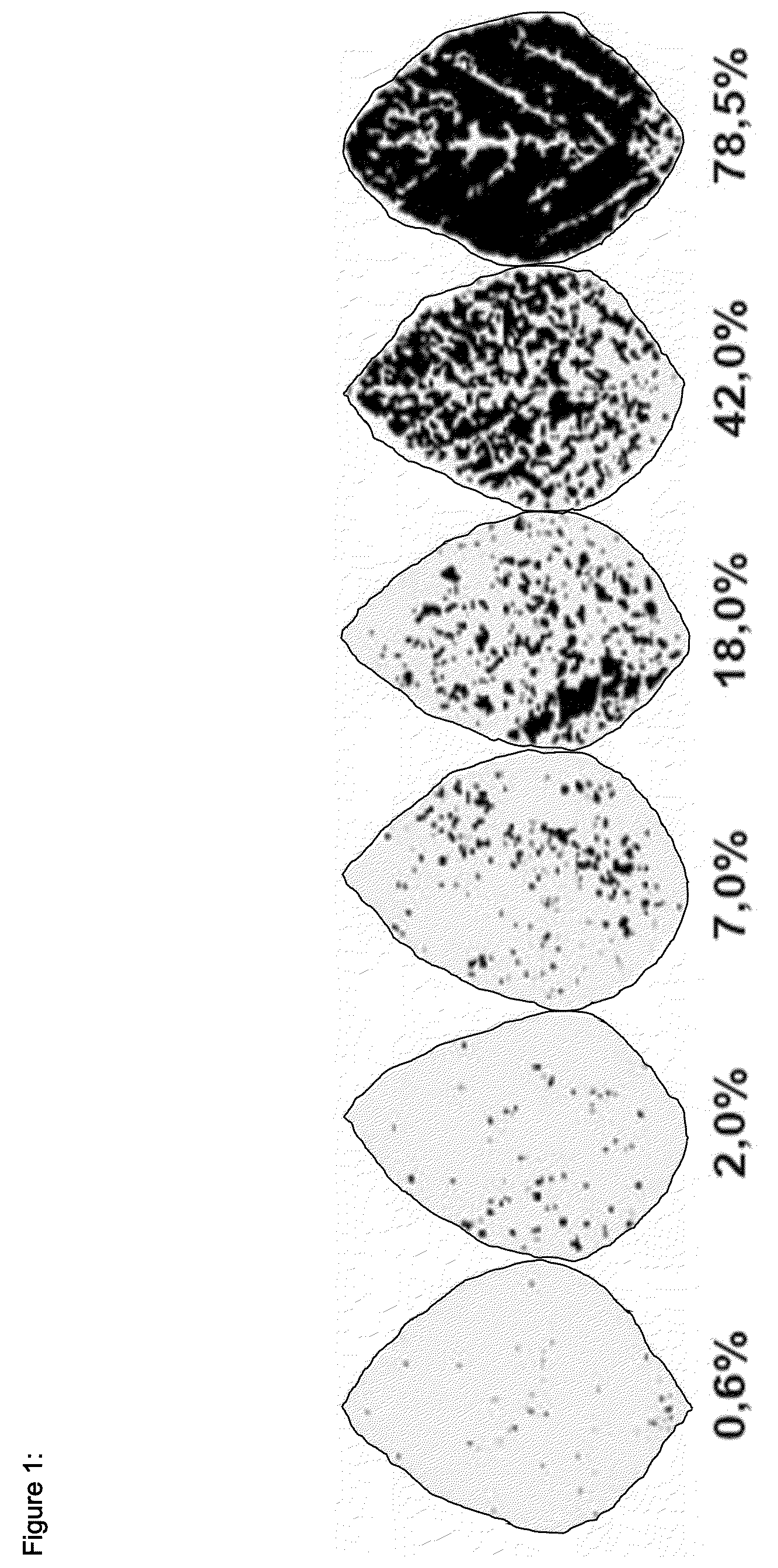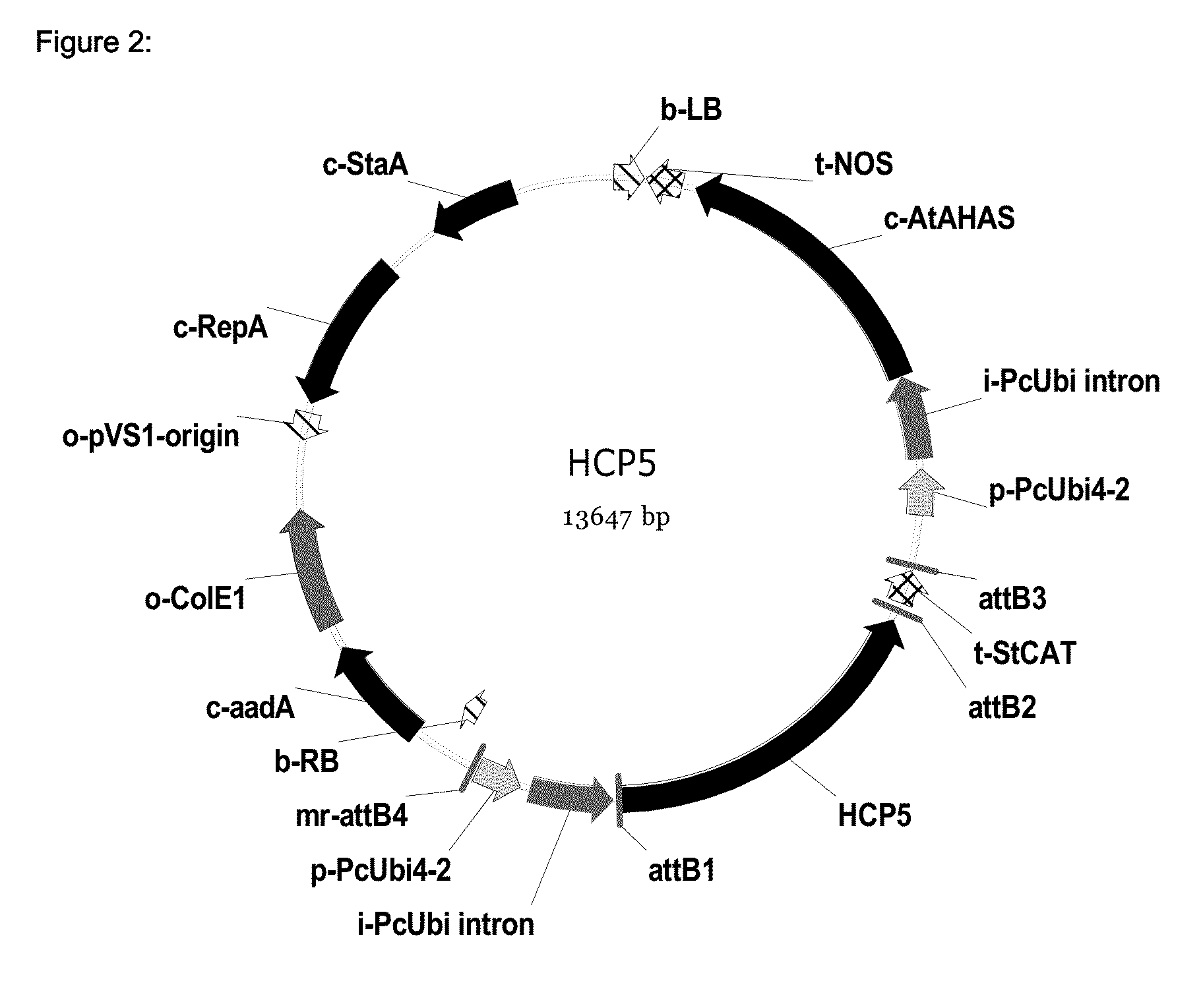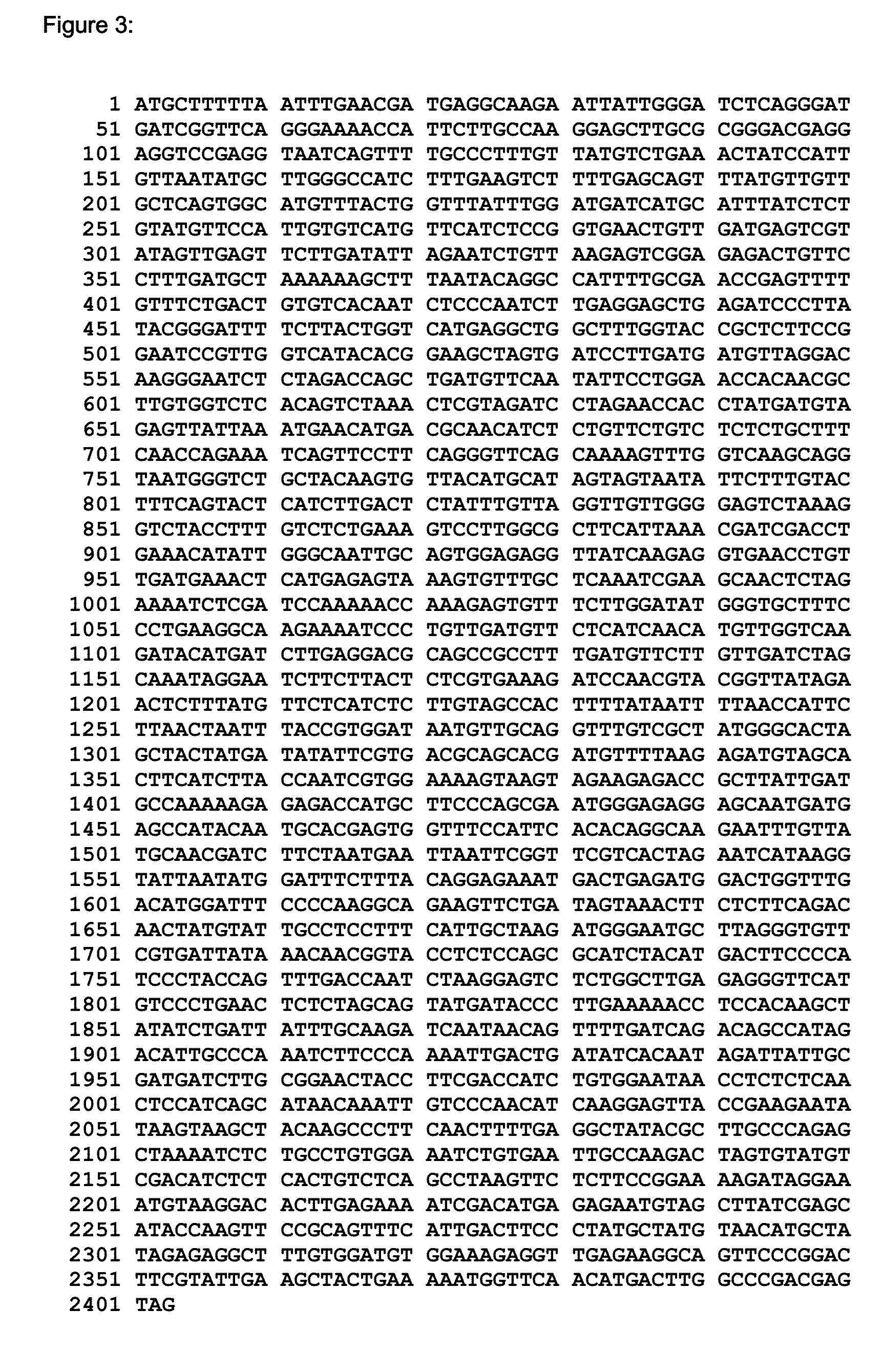Fungal Resistant Plants Expressing HCP5
a technology of hcp5 and resistant plants, which is applied in the field of hcp5-expressing hcp5-resistant plants, can solve the problems of markedly reduced yield, high susceptibility to epidemic-like spreading of diseases, and inability to find soy plants with resistance to the entire spectrum of isolates, etc., and achieves the effect of increasing the expression and/or activity of an hcp5 protein and increasing the resistance against fungal pathogens
- Summary
- Abstract
- Description
- Claims
- Application Information
AI Technical Summary
Benefits of technology
Problems solved by technology
Method used
Image
Examples
example 1
General Methods
[0463]The chemical synthesis of oligonucleotides can be affected, for example, in the known fashion using the phosphoamidite method (Voet, Voet, 2nd Edition, Wiley Press New York, pages 896-897). The cloning steps carried out for the purposes of the present invention such as, for example, restriction cleavages, agarose gel electrophoresis, purification of DNA fragments, transfer of nucleic acids to nitrocellulose and nylon membranes, linking DNA fragments, transformation of E. coli cells, bacterial cultures, phage multiplication and sequence analysis of recombinant DNA, are carried out as described by Sambrook et al. Cold Spring Harbor Laboratory Press (1989), ISBN 0-87969-309-6. The sequencing of recombinant DNA molecules is carried out with an MWG-Licor laser fluorescence DNA sequencer following the method of Sanger (Sanger et al., Proc. Natl. Acad. Sci. USA 74, 5463 (1977)).
example 2
Cloning of Overexpression Vector Constructs
[0464]The cDNA was produced from Arabidopsis thaliana (ecotype Col-0) RNA by using the Superscript II cDNA synthesis kit (Invitrogen). All steps of cDNA preparation and purification were performed according as described in the manual.
[0465]First, the HCP5 sequence from 5′ UTR to 3′ UTR (including the full-length HCP5) was specifically amplified from the cDNA by PCR as described in the protocol of the Phusion hot-start, Pfu Ultra, Pfu Turbo or Herculase DNA polymerase (Stratagene).
[0466]The composition for the protocol of the Pfu Ultra, Pfu Turbo or Herculase DNA polymerase was as follows: 1×PCR buffer, 0.2 mM of each dNTP, 100 ng cDNA of Arabidopsis thaliana (var Columbia-0), 50 pmol forward primer, 50 pmol reverse primer, 1 u Phusion hot-start, Pfu Ultra, Pfu Turbo or Herculase DNA polymerase.
[0467]The amplification cycles were as follows:
[0468]1 cycle of 60 seconds at 98° C., followed by 35 cycles of in each case 10 seconds at 98° C., 30 ...
example 3
Soy Transformation
[0480]The expression vector constructs (see example 2) were transformed into soy.
[0481]3.1 Sterilization and Germination of Soy Seeds
[0482]Virtually any seed of any soy variety can be employed in the method of the invention. A variety of soybean cultivar (including Jack, Williams 82, Jake, Stoddard and Resnik) is appropriate for soy transformation. Soy seeds were sterilized in a chamber with a chlorine gas produced by adding 3.5 ml 12N HCl drop wise into 100 ml bleach (5.25% sodium hypochlorite) in a desiccator with a tightly fitting lid. After 24 to 48 hours in the chamber, seeds were removed and approximately 18 to 20 seeds were plated on solid GM medium with or without 5 μM 6-benzyl-aminopurine (BAP) in 100 mm Petri dishes. Seedlings without BAP are more elongated and roots develop, especially secondary and lateral root formation. BAP strengthens the seedling by forming a shorter and stockier seedling.
[0483]Seven-day-old seedlings grown in the light (>100 μEinst...
PUM
| Property | Measurement | Unit |
|---|---|---|
| temperature | aaaaa | aaaaa |
| length | aaaaa | aaaaa |
| pH | aaaaa | aaaaa |
Abstract
Description
Claims
Application Information
 Login to View More
Login to View More - R&D Engineer
- R&D Manager
- IP Professional
- Industry Leading Data Capabilities
- Powerful AI technology
- Patent DNA Extraction
Browse by: Latest US Patents, China's latest patents, Technical Efficacy Thesaurus, Application Domain, Technology Topic, Popular Technical Reports.
© 2024 PatSnap. All rights reserved.Legal|Privacy policy|Modern Slavery Act Transparency Statement|Sitemap|About US| Contact US: help@patsnap.com










